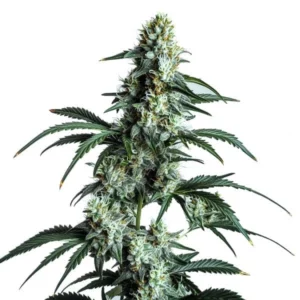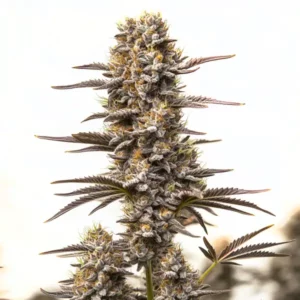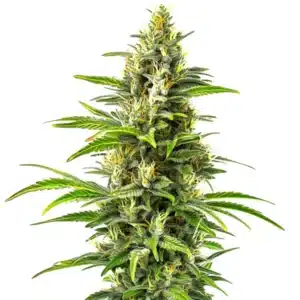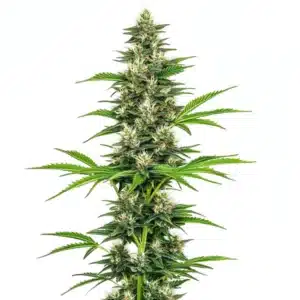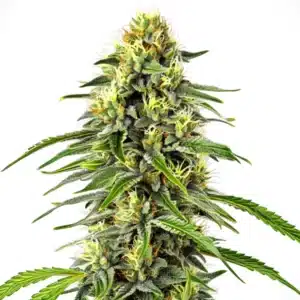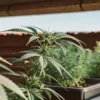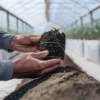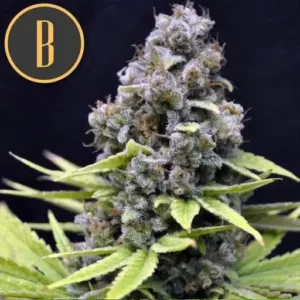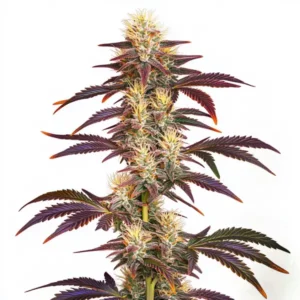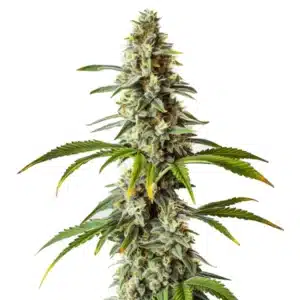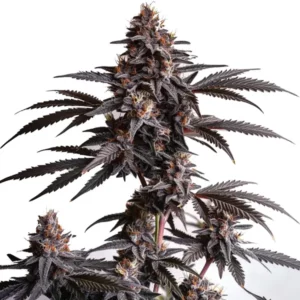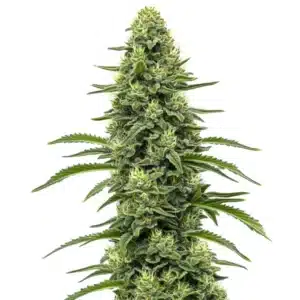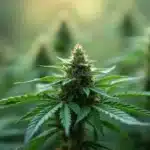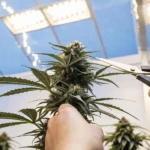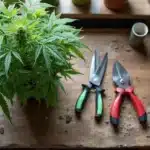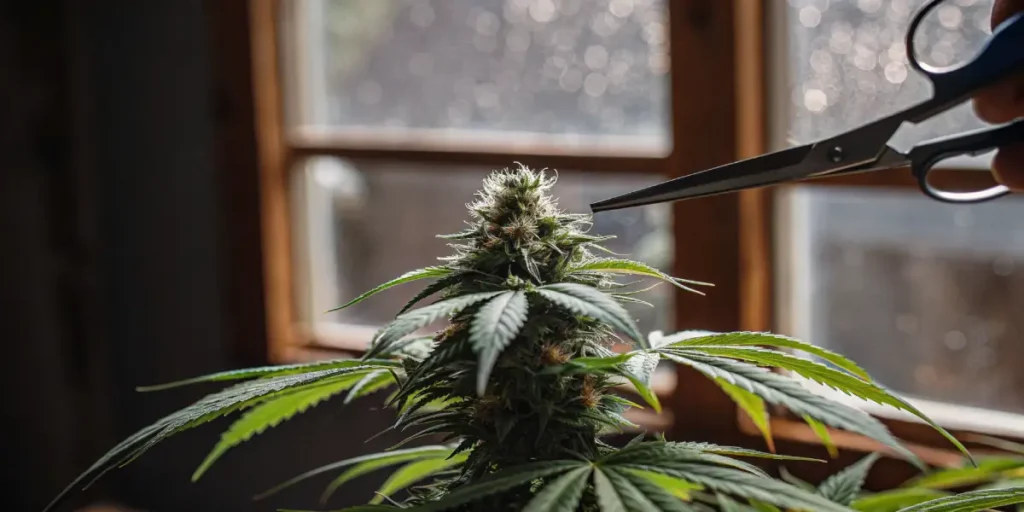
Topping vs Fimming Cannabis: Which Technique to Choose?
Growing cannabis can be both exciting and challenging. When deciding on the best way to prune your plants, the debate often centers around topping vs fimming cannabis. Both techniques are popular among growers aiming for healthier plants and larger yields. But how do you decide which one is right for your garden?
Let’s dive into the differences between topping and fimming cannabis. Topping involves cutting the main stem to encourage the plant to grow two new tops. Fimming, on the other hand, is a technique where you only remove about 75% of the top growth. Both methods aim to increase bud production, but they do so in slightly different ways.
Recommended Strains
Gelato
|
|
THC | 27% (High) |
|
|
Type | Feminized |
|
|
Yield | High |
|
|
Phenotype | 50% Indica / 50% Sativa |
Sour Diesel
|
|
THC | 22% - 25% (Medium) |
|
|
Type | Feminized |
|
|
Yield | High |
|
|
Phenotype | 30% Indica / 70% Sativa |
Choosing between topping and fimming can depend on several factors. These include your growing space, the specific cannabis strains you’re working with, and your personal preferences. Whether you’re growing indoors or outdoors, both techniques can offer significant benefits.
Topping vs Fimming Cannabis Techniques
When considering topping vs fimming cannabis techniques, it’s essential to know what each method entails. Topping involves cutting the main stem’s top growth, typically after the plant has developed 3-5 nodes. This encourages the plant to grow two new stems, leading to a bushier plant.
Fimming, on the other hand, is slightly different. Instead of removing the whole top growth, you only cut about 75% of it. This method can result in 3-8 new growth tips. The goal of both techniques is to maximize light exposure and improve the plant’s overall structure.
Both topping vs fimming cannabis techniques have their advantages depending on your growing goals. If you aim for a more structured growth with predictable outcomes, topping might be your best bet. However, if you’re inclined towards experimenting with plant shapes and maximizing cola count, fimming could be the way to go.
Furthermore, these techniques can be combined with other cultivation practices to enhance results. For instance, integrating low-stress training (LST) with fimming can open up the plant’s canopy, allowing even more light to penetrate and potentially boosting yields.
Promos & Deals
Differences Between Topping and Fimming Cannabis
Knowing the differences between topping and fimming cannabis can help you make an informed decision. Topping creates a V-shaped split, promoting two main colas. This method is great for those looking to create a more structured plant.
Fimming, by contrast, results in a more unpredictable growth pattern. The plant may develop multiple new tops, which can lead to a bushier plant. This method can be particularly beneficial in smaller grow spaces where maximizing the number of colas is essential.
While both techniques aim to increase yield, the differences between topping and fimming cannabis are significant. Topping provides a clear directional growth, which can be beneficial when managing plant height, especially in indoor setups.
In contrast, fimming’s unpredictable nature can sometimes result in a chaotic growth pattern that might require more hands-on management. However, this randomness can also be an asset in achieving a fuller, bushier plant with a potentially higher number of budding sites.
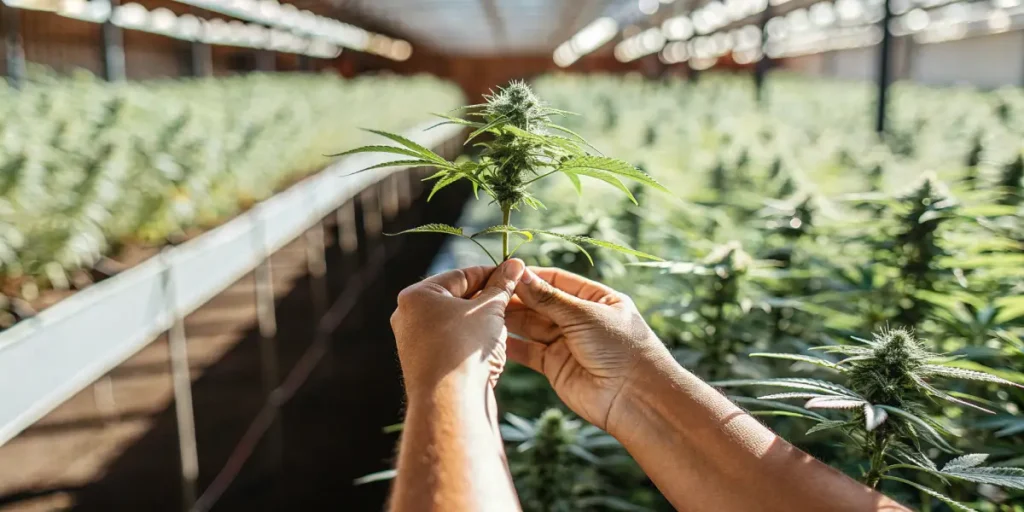
Benefits of Topping vs Fimming Cannabis Plants
One of the key benefits of topping vs fimming cannabis plants is the control it offers growers. Topping provides a more predictable structure, making it easier to manage in larger grow operations. This method is often preferred by growers who like to have a clear view of how their plants will develop.
Fimming, however, offers a different set of advantages. It can lead to a more natural-looking plant with multiple colas. This can be particularly advantageous when working with strains that naturally tend to grow bushier or when growing in limited spaces.
Another benefit of topping vs fimming cannabis plants is the adaptability of each technique to different growing environments. Topping is often favored in controlled setups where vertical space is less of a concern, allowing for methodical training and pruning.
Conversely, fimming is excellent for environments where space efficiency is crucial. The bushier growth pattern can fill out a grow tent or outdoor area more effectively, making the most of every inch available for light absorption and growth.
How to Choose Between Topping and Fimming Cannabis
Choosing between topping and fimming can seem daunting at first. Consider the size of your grow space and the strains you’re working with. For larger spaces, topping might be the preferred option as it allows for a more controlled growth pattern.
Fimming might be the better choice in smaller spaces where vertical growth is limited. This technique helps create a bushier plant, maximizing the available light and space. If you’re growing indoors and want to try fimming, consider using a strain like Critical Automatic, known for its adaptability and robust growth.
Your choice of topping vs fimming cannabis should also reflect your personal goals as a grower. If you’re looking to experiment and learn more about plant responses, fimming can provide valuable insights through its varied outcomes.
On the other hand, if your priority is to maintain a consistent and predictable harvest cycle, topping may align better with your objectives. Its precise nature allows for strategic planning around plant growth and yield expectations.
Topping vs Fimming for Higher Cannabis Yields
Maximizing yields is often the primary goal for cannabis growers. Topping vs fimming for higher cannabis yields can be a strategic decision. Topping generally offers more control, which can be beneficial for planning your grow cycle and managing plant height.
Fimming, however, can lead to a greater number of colas, which may translate to higher yields if managed correctly. This technique can be particularly effective when combined with other methods like low-stress training (LST).
In the quest for higher cannabis yields, the decision between topping vs fimming can hinge on your ability to manage plant growth effectively. Topping provides a structured approach that can help maintain uniform light distribution across the plant canopy.
Meanwhile, fimming can burst into a flourish of new growth tips, each potentially becoming a productive cola. This can be especially advantageous when aiming to maximize yield per square foot, turning a single plant into a multi-branched producer.
Real-Life Examples and Strain Recommendations
For those experimenting with these techniques, real-life examples can be invaluable. Consider a grower using Gelato from Blimburn Seeds. By employing fimming, they might create a dense canopy, ideal for maximizing indoor light.
Alternatively, growers using topping might choose a more predictable strain like Sour Diesel. This strain’s robust nature and straightforward growth pattern make it an excellent candidate for topping, providing a strong, durable plant structure.
Real-life experiences with topping vs fimming cannabis demonstrate the versatility of these techniques. A grower working with a strain like Critical Auto may find that fimming encourages a branch-heavy structure that thrives under indoor lighting conditions.
Conversely, strains known for their vigor, such as Grape Ape, may respond well to topping, allowing growers to harness the plant’s natural growth tendencies towards creating two dominant colas.
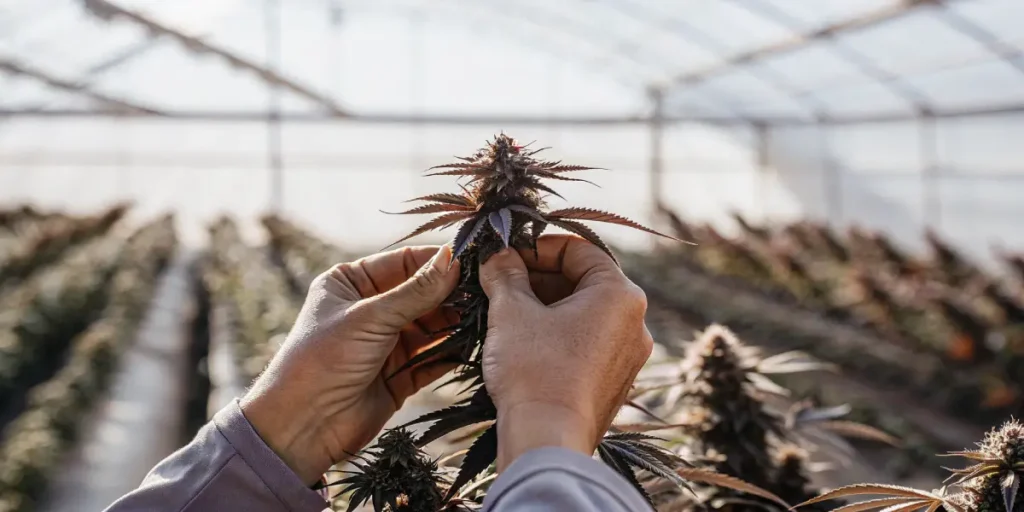
FAQs
What is the main difference between topping and fimming cannabis?
The primary difference lies in the cutting method. Topping involves cutting the main stem to promote two new tops, while fimming removes about 75% of the top growth, potentially leading to multiple new shoots. Topping creates a more controlled growth pattern, whereas fimming can result in a bushier plant.
Both methods aim to enhance light exposure and improve plant structure. Your choice between the two should consider factors like grow space size, strain characteristics, and personal preference for plant appearance.
Knowing the differences between topping and fimming cannabis can be crucial for achieving desired plant outcomes. While topping offers a more predictable growth path, fimming introduces an element of surprise that can result in diverse growth patterns.
The choice between these techniques often comes down to personal preference and the specific needs of your grow environment. Growers should weigh the benefits of each approach to determine which aligns best with their cultivation goals.
Which technique is better for beginners: topping or fimming?
For beginners, topping may be easier to manage due to its predictable results. It offers a straightforward way to encourage plant growth and is generally more forgiving in terms of execution. This technique also provides clear visual feedback in terms of plant structure.
Fimming, while potentially more rewarding in terms of bud production, can be less predictable. It requires a bit more skill and understanding of plant growth patterns. However, it can be an exciting experiment for those willing to learn through trial and error.
Beginners exploring topping vs fimming cannabis should consider their comfort level with plant training. Topping is often recommended for newcomers due to its straightforward process and easily recognizable results.
In contrast, fimming might appeal to those eager to explore the dynamic growth possibilities it offers. Though it requires a slightly more nuanced knowing of plant development, it can be a rewarding technique for those willing to observe and adapt.
Can I use topping and fimming together on the same plant?
Combining topping and fimming on the same plant is possible and can be an effective way to maximize yields. This approach requires careful planning and monitoring, as each cut can stress the plant differently. It’s essential to allow recovery time between each technique to prevent over-stressing the plant.
When done correctly, using both techniques can create a well-structured, bushy plant that takes full advantage of available light. Always observe your plants closely and adjust your approach based on their response to ensure optimal growth and health.
Integrating topping vs fimming cannabis techniques on a single plant can lead to a uniquely tailored growth structure. This hybrid approach allows growers to capitalize on the benefits of both methods, potentially leading to more robust yields.
However, it’s critical to be mindful of the plant’s health throughout this process. Careful observation and timely intervention can ensure that the plant maintains vigor and continues to thrive despite the additional stress from multiple pruning methods.
How does strain selection affect the choice between topping and fimming?
The choice between topping and fimming can be influenced by the strain you’re growing. Some strains respond better to one technique over the other. For example, indica-dominant strains, known for their bushy nature, might benefit more from fimming.
Sativa strains, which tend to grow taller, might respond better to topping, as it helps control height while promoting lateral growth. Always research the specific characteristics of your chosen strains to determine which method will yield the best results.
Strain characteristics play a significant role in the decision of topping vs fimming cannabis. Indica varieties, with their natural bushiness, often thrive under fimming as it enhances their innate growth tendencies.
Meanwhile, sativas, known for their vertical growth, can benefit from topping. By encouraging lateral branching, topping can manage height while promoting a more balanced growth structure that supports higher yields.
Are there any strains from Blimburn Seeds that are particularly suited to topping or fimming?
Yes, several strains from Blimburn Seeds are well-suited for these techniques. For fimming, strains like Grape Ape and Gelato can benefit from a bushier growth pattern. These strains respond well to the increased number of colas that fimming can produce.
On the other hand, Sour Diesel is an excellent candidate for topping. This strain’s robust nature and predictable growth patterns make it ideal for creating strong, well-structured plants. Always consider your growing environment and goals when selecting strains and techniques.
Exploring topping vs fimming cannabis with strains from Blimburn Seeds can offer valuable insights into plant behavior. Strains like Gelato thrive with fimming, leveraging their natural growth tendencies to produce a dense canopy.
Alternatively, strains like Sour Diesel are well-suited for topping, allowing growers to harness their vigorous growth patterns. Selecting the right strain for your technique can significantly enhance your cultivation success.



